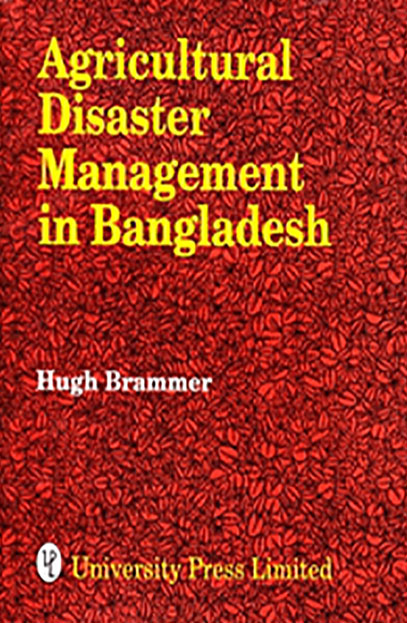
- Shop
- Agricultural Disaster Management in Bangladesh
Agricultural Disaster Management in Bangladesh
| Language: English |
Tags :
Book Info
This book includes selected papers on agricultural disaster management based on the author's thirty-five years experience in agricultural development in Bangladesh. This was a field in which the author did pioneering work: first by analysing the impacts of natural disasters on agricultural production and indicating practical rehabilitation measures for different kinds of land and soils month by month throughout the year; then by codifying institutional procedures for reporting and assessing crop damage and for organizing appropriate relief and rehabilitation measures. Although the information and procedures relate specifically to Bangladesh, the principles described in this book can be applied in other countries, especially in countries where small-scale farmers predominate. The book comprises four parts. Part I describes Bangladesh's physical environment to assist readers in understanding the country's distinctive land use and the kinds of natural disaster which occur. Part 11 comprises five chapters describing procedures for preparing contingency plans, assessing damage, and preparing and monitoring rehabilitation programmes, a chapter recording the author's experience in monitoring and interpreting weather data, plus a chapter describing measures to protect flood-protection, road and railway projects from flood damage. The core of the book is contained in Part 111. This comprises eleven chapters dealing with individual kinds of disaster, including floods, drought and cyclones. Each chapter systematically describes the impacts of a specific disaster type on agriculture, the preventive, precautionary, rehabilitation and relief measures that can be taken to mitigate their effects, and the role of agricultural research and extension in disaster mitigation. Part IV comprises three chapters. Two of these reproduce reports made after specific cyclone and drought disasters, while the concluding chapter sums up the lessons learnt from the author's experience. That chapter, and the book as a whole, provide a practical guide to planners and administrators responsible for designing and implementing measures to reduce the impacts of natural disasters on farmers and on agricultural production.

Hugh Brammer
Hugh Brammer (MA, Geography, Cambridge University, 1951) worked on reconnaissance soil surveys in the Gold Coast/Ghana 1951−61, then joined FAO to organise the reconnaissance soil survey of East Pakistan 1961-71. After serving as Senior Soil Scientist in Zambia 1972-74, he returned to Bangladesh in 1974 to serve with the Ministry of Agriculture as land use (later agricultural development) adviser until his retirement from FAO in 1987. Mr Brammer then worked as a consultant for FAO and the World Bank until 1995, including for Bangladesh’s Flood Policy Study (1989), the Flood Action Plan (1989−95) and a Greenhouse Effects Study (1992). He subsequently wrote seven books on soils, agriculture and land use in Bangladesh, published by UPL. In 2006, Mr Brammer initiated


